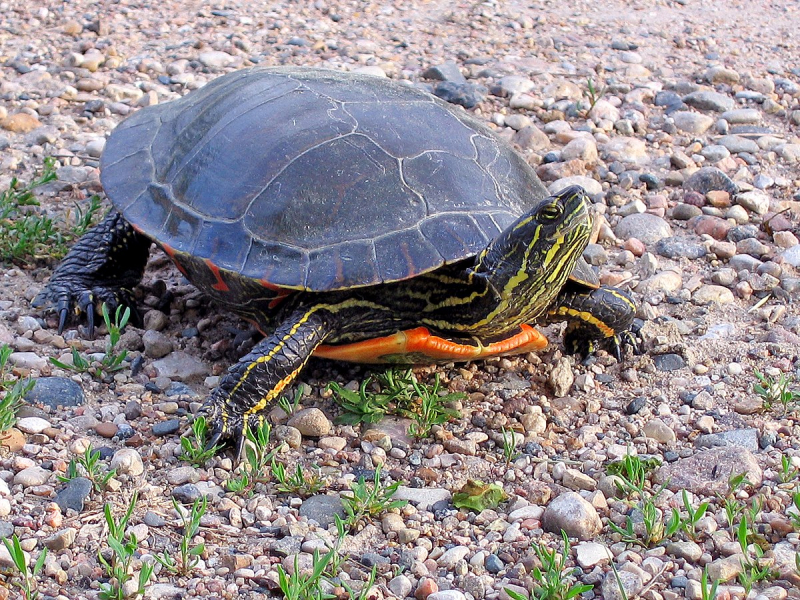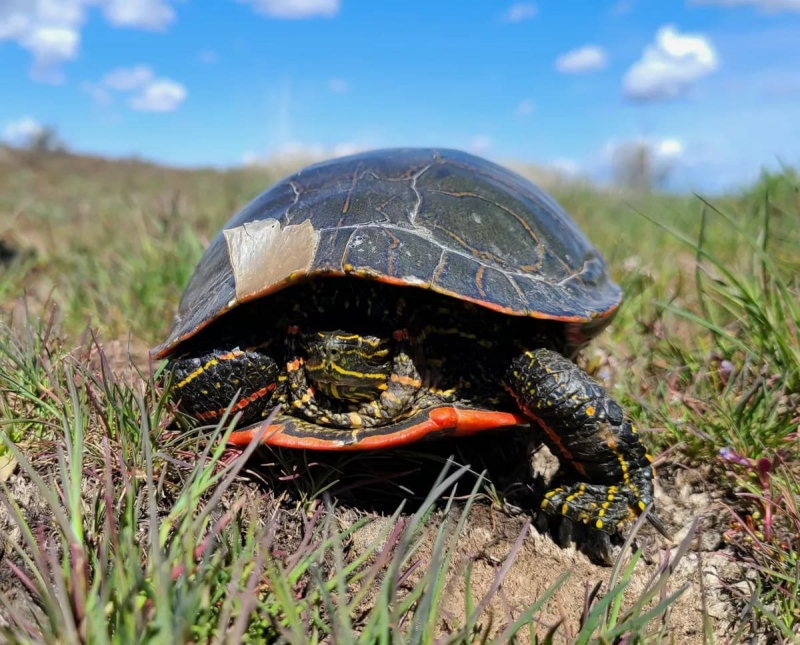Painted Turtle

The most common native turtle in North America is the Painted Turtle (Chrysemys picta). From southern Canada to northern Mexico and from the Atlantic to the Pacific, it inhabits slowly moving freshwaters. Large wetlands with protracted periods of inundation and emergent plants have been found to be their preference. This turtle belongs to the genus Chrysemys, which is a subspecies of the Emydidae family of pond turtles. The painted turtle was alive 15 million years ago, according to fossil evidence. The eastern, midland, and western subspecies all developed during the last ice age. It is debatable if the southern painted turtle (C. dorsalis), another subspecies of the larger Chrysemys picta, is the only other species.
Painted turtles require sunbathing to absorb heat and maintain a constant body temperature, just as the marine iguana. At dawn, they emerge from the water and spend several hours in the sun to acclimate and prepare for the day. While they may choose to lounge on the sand, they are more likely to find a makeshift raft to perch on and take a dip in the ocean to soak up the sun. The turtle's health benefits from basking because any ectoparasites dry out and fall off in the sunlight.











